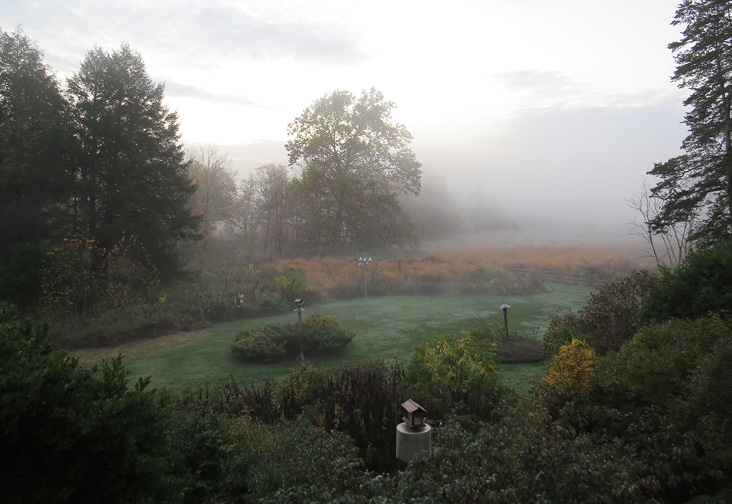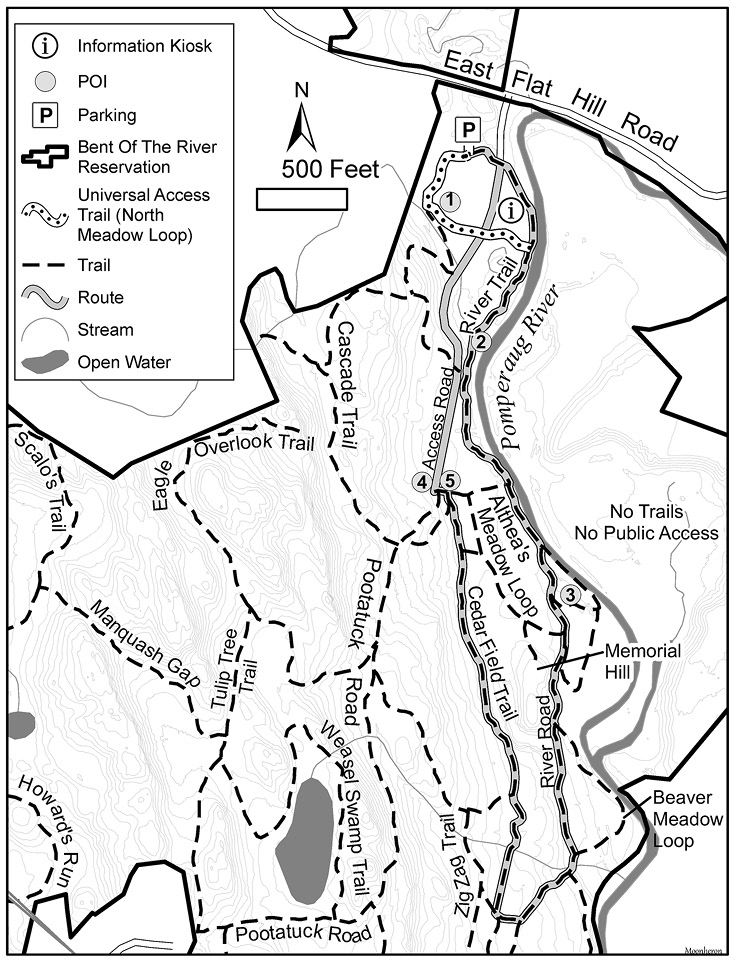Corrie Folsom-O’Keefe, Robin Ladouceur, Allison Middlemass, and Glen Somogie

View from the Nature Center’s birding balcony. All photographs by Corrie Folsom-O’Keefe.
The Bent of the River Audubon Center, located in Southbury, Connecticut, comprises 700 acres of diverse habitats: woodlands, meadows, shrublands, wetlands, and a one–mile stretch of the Pomperaug River. Located just to the east of the Housatonic River, the Bent of the River’s woodlands are a mix of deciduous and coniferous trees. The coniferous hillsides, mostly white pines and hemlocks, attract bird species that are more common to the Center’s north, and the deciduous lowlands and shrubland fields support species more typical of southern Connecticut.
A recognized Important Bird Area, Bent of the River’s variety of habitats allows for tremendous diversity of nesting species. Eighteen species of warblers have been recorded in the nesting season. Sizable populations of Blue-winged Warbler and Indigo Bunting nest here (more than 20 pairs of each species), as well as populations of several other early successional species of greatest conservation need, including American Woodcock, Black-billed Cuckoo, Yellow-billed Cuckoo, Eastern Kingbird, Prairie Warbler, Eastern Towhee, and Field Sparrow (CT.gov 2015). The deciduous woodlands host healthy populations of several species of greatest conservation need, including Veery, Wood Thrush, Black-and-white Warbler, Louisiana Waterthrush, Scarlet Tanager, and Rose-breasted Grosbeak (CT.gov 2015).
The Bent of the River’s shrubland fields—nearly 90 acres— are what make this sanctuary exceptional. The shrubland and meadow habitats are considered early successional. That means they are young, regenerating forest. Typically, a meadow will grow into a shrubland and then into a forest over time if left alone. This process is natural, but these early successional habitats are becoming scarce in Connecticut due to human development, loss of farming, and forest regeneration.

Map of Bent of the River Reservation.
To view the rest of the article you'll need to
subscribe. Bird Observer publishes original articles on birding locations, on avian populations and natural history, on regional rarities, field notes, field records, photographs, and art work.